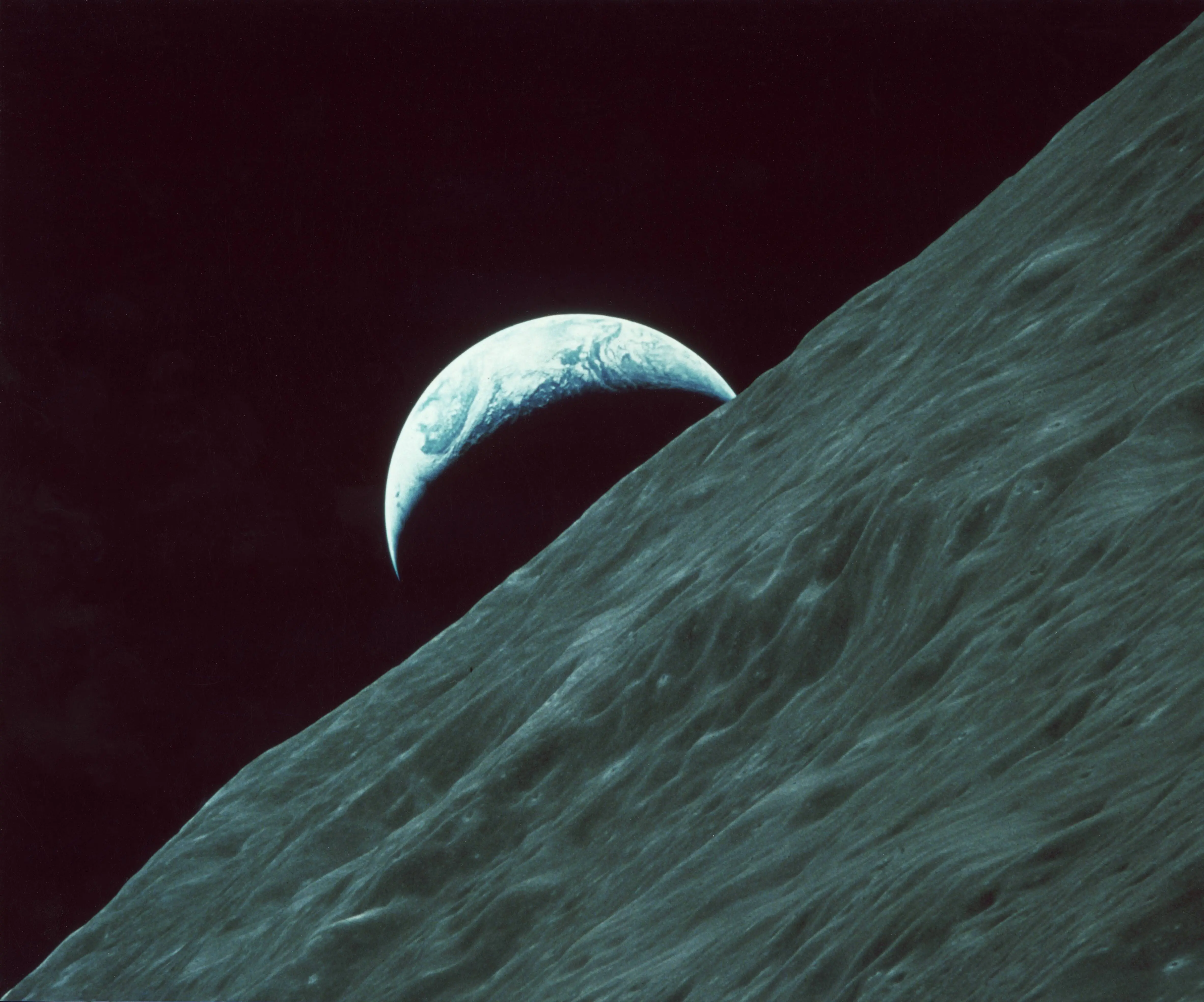New findings from NASA indicate Saturn’s moon Enceladus could host life deep under its frozen crust
-
 The planet Earth as seen from the surface of the moon during the Apollo 17 lunar landing mission, December 1972. (Photo by Space Frontiers/Getty Images)
The planet Earth as seen from the surface of the moon during the Apollo 17 lunar landing mission, December 1972. (Photo by Space Frontiers/Getty Images)NASA researchers have found new evidence that Saturn's ice moon Enceladus could possess the proper conditions to harbor life. The research, using data collected by previous space missions, suggests the ocean beneath Enceladus's icy exterior contains the necessary chemical ingredients for life.
Scientists discovered remnants of chemicals that might serve as a source of energy for microbial life, much like ecosystems that exist on Earth's ocean floor around hydrothermal vents.
Such vents here support active colonies of microorganisms that thrive without the sunlight, supported instead by chemical reactions between water and rock — a phenomenon that also might occur under Enceladus's icy surface.
Evidence from the Cassini mission
The discoveries were made possible due to information gathered by NASA's Cassini spacecraft as it orbited Saturn from 2004 through 2017. While in its mission, Cassini flew by plumes of ice and vapor particles coming from the cracks close to Enceladus's south pole.
Analysis of the plumes contained a combination of water, carbon dioxide, methane, and other organic molecules — all which are thought to be essential building blocks for life.
The new study is based on those previous findings and revealed the presence of phosphorus, which is an important component of DNA and cell membranes. Phosphorus is a very vital nutrient for life on Earth, and its presence makes it more likely that Enceladus's subsurface ocean may be able to support life.
Researchers hypothesize that interactions between the rocky core of the moon and its liquid ocean could continually release such elements in a form that would be conducive to microbial life.
What makes Enceladus unique
Enceladus differs from other icy moons in the solar system due to its active geology. The ever-present geysers emitting water vapor from its surface provide scientists with a unique chance to examine an alien ocean without digging deep beneath its surface.
NASA says that these plumes are like natural samples from beneath the crust, where scientists can use remote instruments to test for life-giving compounds.
Although Enceladus's surface is still very cold — about minus 330 degrees Fahrenheit — its internal ocean may be maintained at heat by tidal heating from gravitational forces with Saturn.
The process generates sufficient energy to sustain liquid water and potentially power chemical reactions at the ocean floor.
Although the finding does not prove there is life on Enceladus, researchers point out that it makes the case for later exploration even more powerful.
NASA and other space agencies are pondering new missions that might soar through the moon's plumes once again, but this time with sophisticated instruments meant to directly hunt for biological markers.
For the time being, the new study puts Enceladus on the list as one of the most promising places in space outside Earth to look for extraterrestrial life.
The moon's blend of water, warmth, and key chemicals remains a prime target for humanity's hunt for where life can exist elsewhere in the solar system.
TOPICS: NASA
- NASA’s Webb telescope detects the earliest known supernova from 730 million years after the Big Bang
- NASA completes assembly of the Nancy Grace Roman Space Telescope
- Supermassive black hole unleashes ultra-fast winds moving at 20% the speed of light
- NASA missions identify unusual Gamma Ray burst with record duration